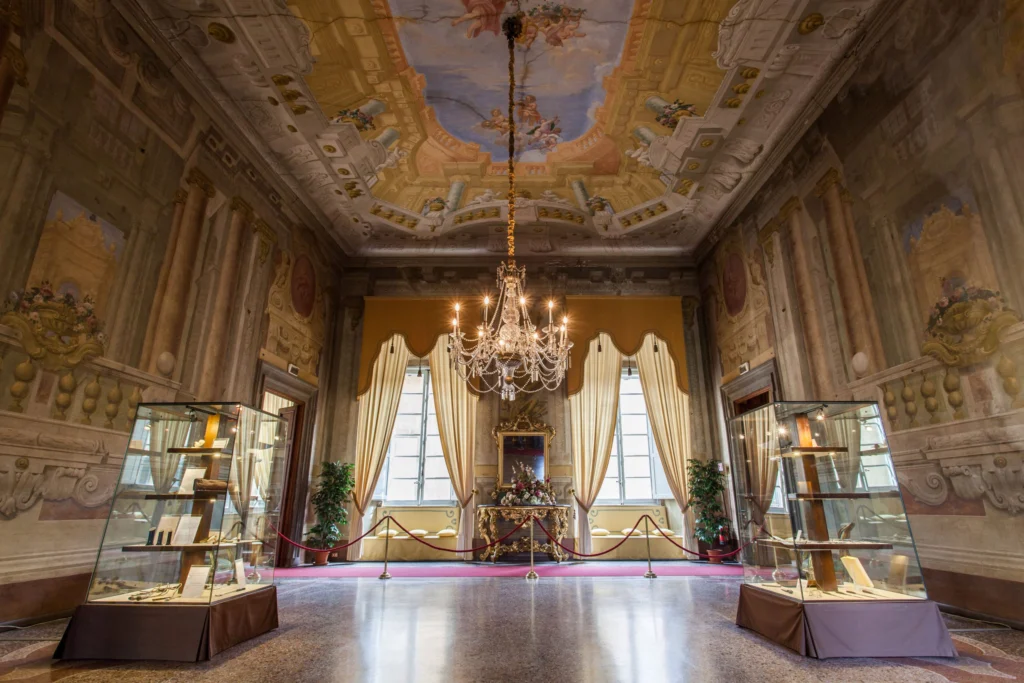Located at the top of the monumental staircase,
the Museum takes up the entire first floor of Palazzo Pfanner. It opens up on the large central hall, featuring the fine frescoes by Pietro Paolo Scorsini (1658-1731) completed around 1720, and belonging to the so-called ‘Quadraturism’ pictorial current.
‘Quadraturist’ painting was known for its ability to portray an illusory extension of spaces, through architectural elements painted in perspective. On the hall walls, we can observe the development of massive ionic columns, paired in the depth direction, almost to punctuate the progression of the different spatial levels. While the ceiling features a gallery with fake green marble columns, supporting the solid architectural structure ending in a light blue background. In the centre, there is the personification of Dawn, surrounded by flying cherubs holding a basket filled with flowers, a torch and a basin with overflowing dew.

The central hall is connected to a kitchen, a dining room, a bedroom and a tea room. In the kitchen, the old oven is the background of a small room, where we can see the ceramic bottles from the old Pfanner brewhouse, and the typical tools of a 19th century kitchen.
The kitchen leads to the dining room where, under a coffered ceiling, there is the dining table with big period dinnerware, glassware, cutlery and tableware sets.
The next room houses a fine 18th century canopy bed, with Lucca silk trimmings. Next to it, an Austrian-style terracotta heater is significant of the ownership transfer from the noble Controni merchant family, who were silk entrepreneurs, to the brewer from Hörbranz, Felix Pfanner.
In the last space, the tea room, a Vienna 1855 fortepiano stands out, between vintage furniture and décor. A reliquary – paying homage to a typical 19th century fashion – concludes the Museum path.
The rooms host a permanent exhibition of medical-surgical instruments and ancient medical texts that belonged to Pietro Pfanner (1864–1935), a surgeon, philanthropist, and mayor of Lucca from 1920 to 1922. Among the items on display are orthopedic, gynecological, and neurological instruments, highlighting the complexity of a profession that, at the time, had no specializations and still maintained a generalist approach.




